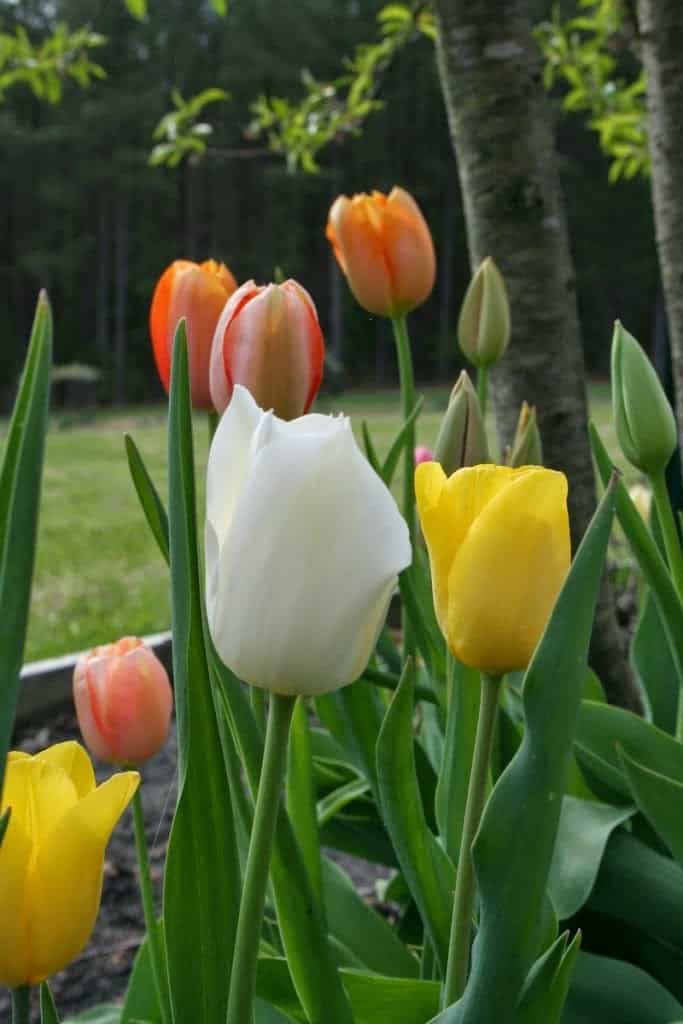
Today on the blogging A to Z challenge, my topic is Understanding Fertilizer – for the letter U, of course. C’mon, what did you think it would be? Is there any vegetable, fruit or edible plant that starts with U? I couldn’t find any.
So I’m searching for the perfect photo and I think: fertilizer. Cows.
Yes, I’ll post a picture of cows.
Then I thought, “Who the heck wants to look at pictures of cows?”
So while tulips don’t have anything whatsoever to do with understanding fertilizer….they’re a lot prettier than cows.
On to today’s topic: fertilizer.
Fertilizers can be organic or inorganic, manufactured or natural. Basically, all fertilizer is something added to the soil to provide food for plants.
Think about food for a minute. You probably remember from health science class years ago that people need protein, fat and carbohydrates to live. Plants need three things too: nitrogen, phosphorous and potash. Other macro nutrients include calcium, magnesium and sulfur. But people also need other things in their food to be healthy: vitamins and minerals. Plants need many micro nutrients such as boron, iron, copper, and more to stay healthy, too.
How much a plant needs depends, of course, on the plant. Plants use their roots to absorb water from the soil; water contains the vital elements they need to live. When the elements are unbalanced, plants either cannot absorb enough of one, or they aren’t getting enough of another element from the soil. Diseases or weakened plants are the result. Plants can only absorb elements that have been released into the soil, whether from organic sources, such as compost, animal manures and cover crops, or from inorganic sources, such as commercially packaged fertilizers. Organic fertilizers tend to break down slowly, while inorganic fertilizers provide nutrients much more quickly to the plants. That’s why it’s relatively easy to over-fertilize with inorganic fertilizers while it’s hard to over-fertilize with compost and other organic fertilizers.

What Is Compost?
Compost is an organic fertilizer made from manures, the decayed remains of plants, and sometimes other materials too, such as paper or egg shells. In nature, leaf mold covering the ground decays and provides abundant nitrogen and other elements to the roots of plants. Animals poop on the forest floor, and this adds manure to the soil. In our gardens, we add compost or other fertilizers to build up the soil faster than nature can through the cycle of the seasons.
Synthetic (Man-made) Fertilizers
Should You Use Fertilizer?
And yes, at last: COWS. Picture taken by me in January of my neighbor’s beef cattle.
You knew there had to be cows in this post, right?






New follower here. I’m stopping by from the “A to Z” challenge, and I look forward to visiting again.
Sylvia
http://www.writinginwonderland.blogspot.com/